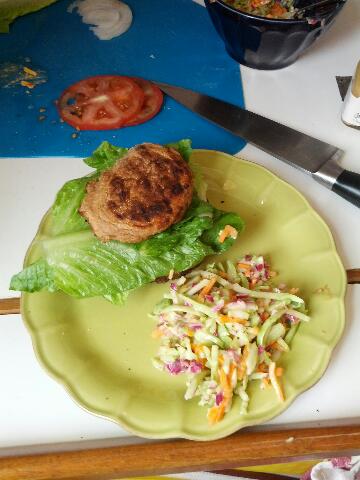“Taste the water!” My immediate reply to Anne’s excited cries
of, “the bilge pump is running, the cabin sole is wet, the bilge is full of
water!”
While focused on setting anchor in Cooper River before the next
thunderstorm washed over us, Anne and I both heard the sound. Anne described it as the splat from a bag of
pasta falling to the floor. I thought it
was a paperback book striking flat on the cabin sole. I went below to search out the origin of the
sound, but my hasty scan yielded no culprit.
We both returned our attention to the dark bruise of a thunderstorm
blotting out an ever growing portion of the southern sky.
Agreeing on a spot mid channel in 11 feet of dark brown tannic
water, we fell into our well-rehearsed roles for anchoring C’est la Vie. Anne took the helm and I went forward. Everything seemed normal… anchor slipped off
the deck, under my hands the windlass fed out chain, Anne reversed the boat to
set the hook, Anne silences the engine
and begins recording the data on our days travels, I rig the anchor
bridle. The routine derailed when Anne
informed me the bilge pump cycled on.
Typically C’est la Vie is a very dry boat and the bilge pump rarely
runs. After a nearly a week of on and
off rains, I figured some water had found its way inside and wandered on down
to the bilge. I do not recall my exact
words, but I’m sure the sentiment was, “Thanks for the update on the bilge pump
it is nothing to worry about.”
Anne slipped below and began to discover other
oddities. The bilge pump continued to
run. The cabin sole was wet. She lifted a floor board and found standing
water. “Taste the water!” was my urgent
reply to her alarmed cry for assistance.
For those unfamiliar with life aboard a boat… when living
in/on a floating object there are two distinctly different types of flooding. One: the gut wrenching, find the source or
the boat will sink type of flooding where the hull is breached below the water
line. In this scenario salt water will
continue to fill the boat until the hole is found and patched or the boat
sinks. Second: Much less traumatic is the bummer we just
lost our drinking, cooking, bathing fresh water due to a plumbing failure. The fastest method of discerning the type of
leak is… to taste the water.
My hand darted into the bilge and back to my mouth. Fresh.
Whew, I tasted fresh water. I
rushed forward into a locker under the vee berth and closed the valve just downstream
of the freshwater tank. Unless the tank
itself had failed this would stop additional water from leaking into the bilge.
 |
| Anne cleaning the bilges after the flood. |
Anne followed the water up until she discovered warm water
in the locker under the port side settee seats.
Warm water, port side my detective, plumber brain sifted the facts. Donning a head lamp I scurried over the
counter top to inspect the hot water heater.
Here I discovered the proverbial smoking gun. The source of the leak and the unidentified
noise heard on approach to the anchorage – the outlet hose on the hot water heater
failed. Anne focused on the cleanup,
while I repaired the plumbing. Within
an hour the cabin returned to normal and our pressure water system was back on
line. Based on our estimates we lost 10
to 12 gallons of water. Fortunately we
carry an additional 10 gallons in jerry cans.
This isolated reserve water proven it value on multiple occasions.
This episode reinforced two best practices on board: First, don’t’ put all your eggs in one
basket. Always carry additional potable
water separate from the primary tank.
Second, turn off the vessel’s pressure water system if everyone departs
the boat. If we had not been on the boat
to turn off the breaker for the fresh water pump, then the system would have
pumped the entire contents of fresh water tank into the bilge.
Oh, and that thunderstorm looming to the south? It
dissipated over Savannah providing us with only a brief shower.
All is well that ends well.









